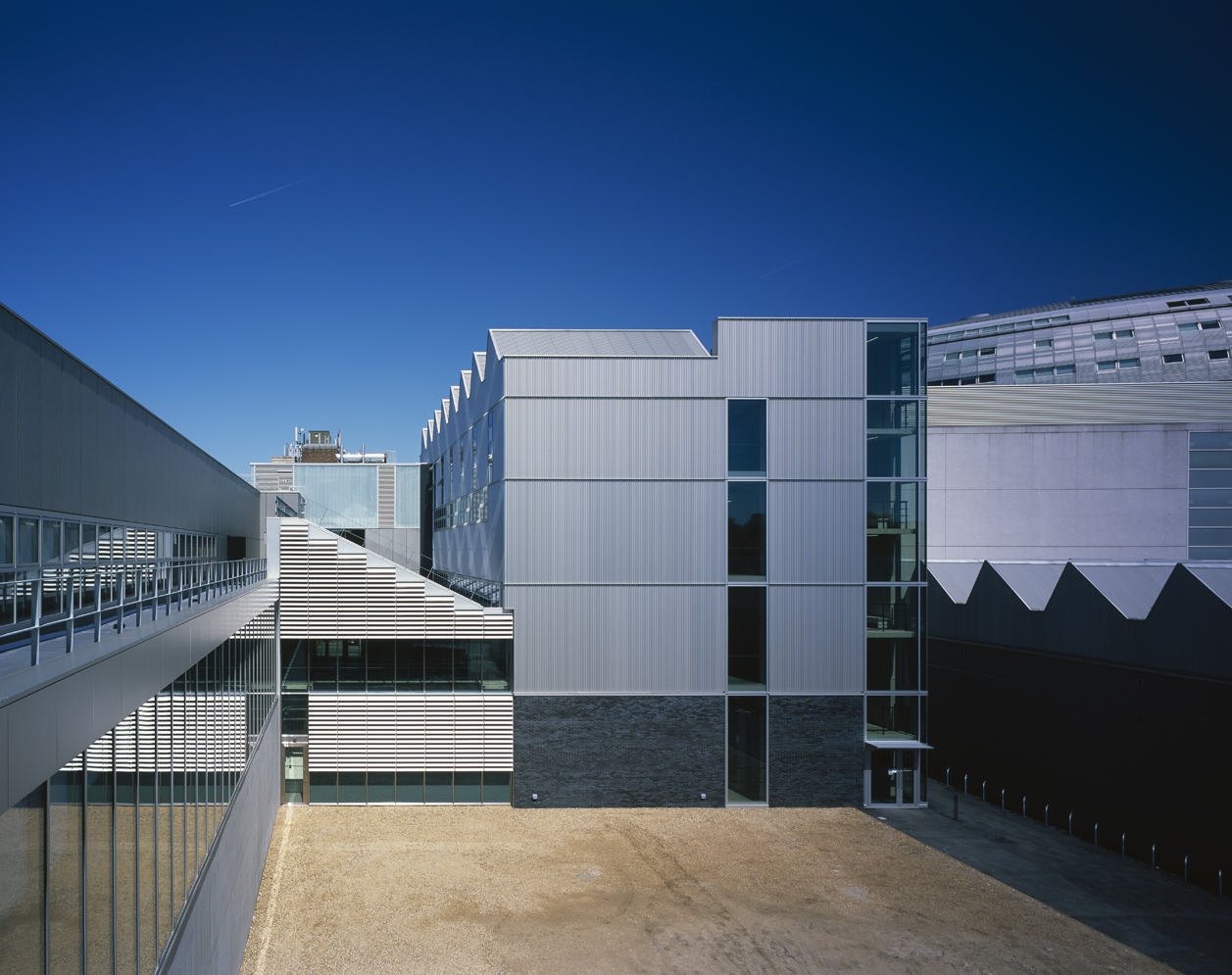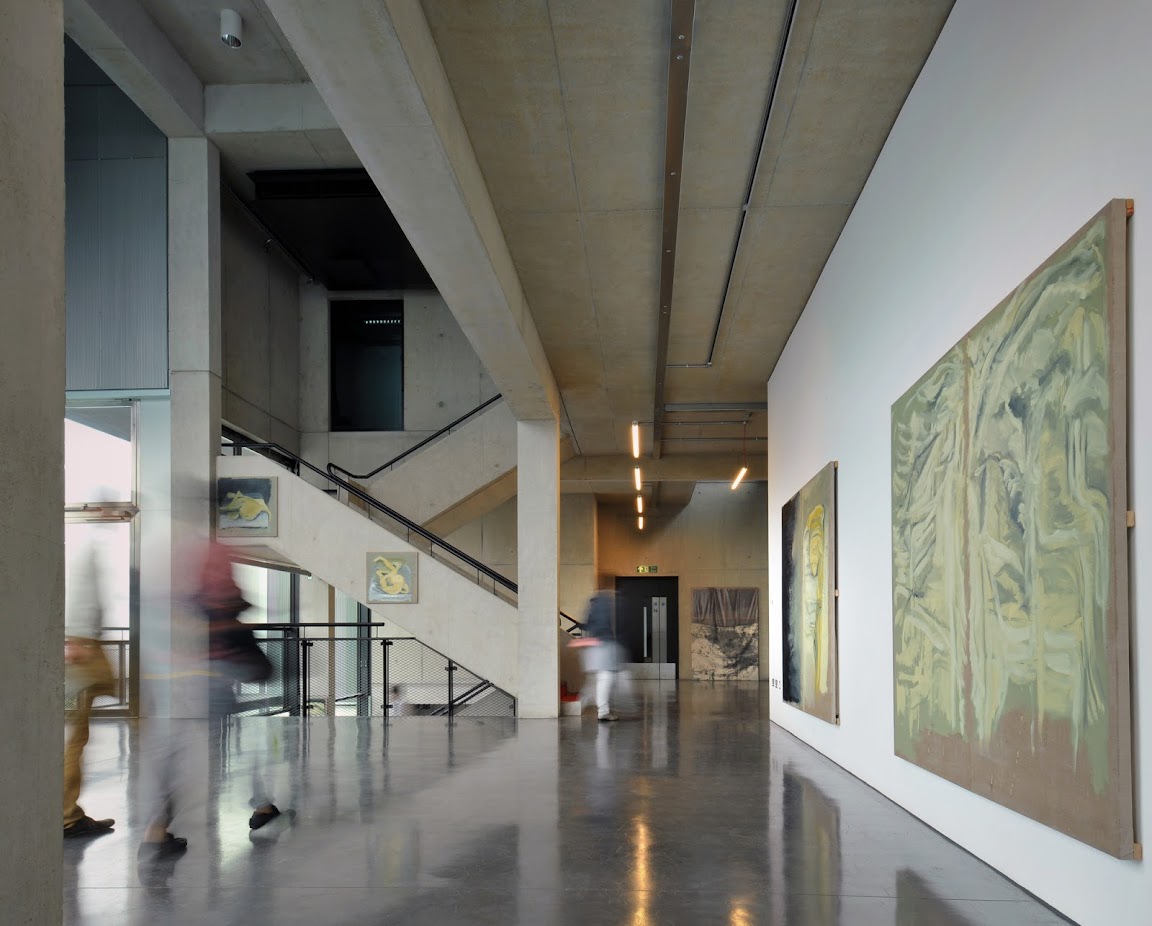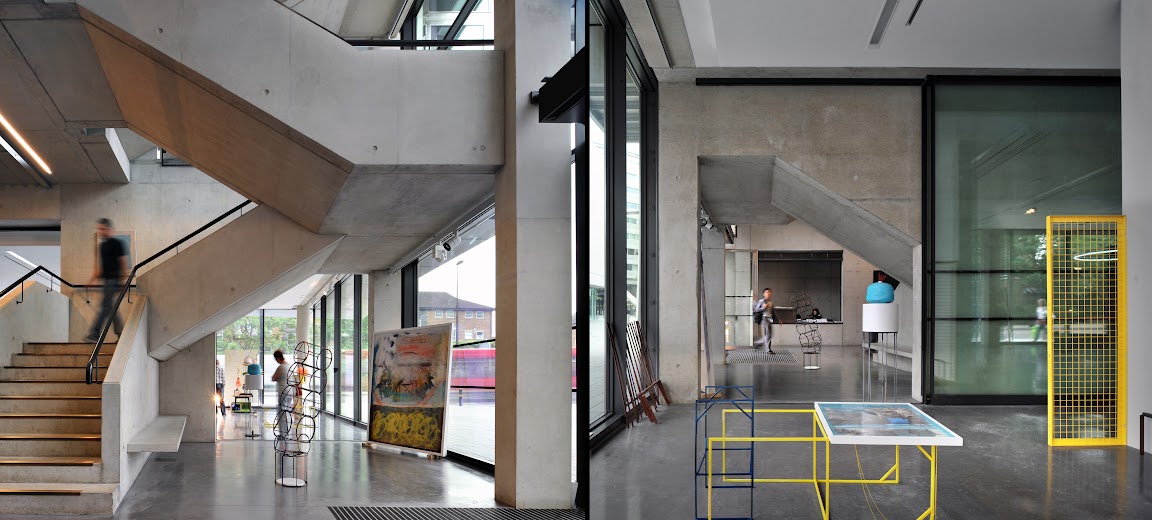


























 Architects: Haworth Tompkins Location: London, England, UK Area: 4,750 sqm Year: 2012 Photographs: Courtesy of Haworth Tompkins The Royal College of Art, the world’s leading post-graduate art College, have opened a new academic building as part of a £61 million masterplan for the institution. The Dyson building, designed by award-winning architects Haworth Tompkins, is the most significant new development to the Royal College of Art since it moved to Kensington Gore in 1962 and forms the centrepiece of the RCA’s new Battersea Campus. The development sits alongside the RCA’s existing Painting and Sculpture Programmes on the site. It will connect with and provide a boost for ‘Creative Battersea’, which currently boasts the headquarters of Vivienne Westwood, Foster + Partners and Will Alsop, amongst many others. As well as containing the Printmaking and Photography programmes, the building is also home to a 220-seat lecture theatre, a public gallery and the College’s business incubator. The building is conceived as a creative ‘factory’ both in the industrial sense (as a place of industry), and through the reference to Andy Warhol’s Factory as a place of art production. A large central ‘machine hall’ forms the heart of the building, designed to house the large printing machines used by artists, around which the learning, business and gallery spaces are arranged. A key characteristic of the RCA’s success is the fluid relationship between programmes. The building has been designed to create “horizontal drift” between disciplines, and the creative processes take place in highly visible proximity to one another. The cross-fertilisation of ideas that is present and encouraged on the courses also is enhanced through the additional inclusion of InnovationRCA within the main building, blurring the boundary between the academic and the commercial. InnovationRCA provides business support and incubation services to help students and graduates protect and commercialise pioneering design-led technologies successfully.
Architects: Haworth Tompkins Location: London, England, UK Area: 4,750 sqm Year: 2012 Photographs: Courtesy of Haworth Tompkins The Royal College of Art, the world’s leading post-graduate art College, have opened a new academic building as part of a £61 million masterplan for the institution. The Dyson building, designed by award-winning architects Haworth Tompkins, is the most significant new development to the Royal College of Art since it moved to Kensington Gore in 1962 and forms the centrepiece of the RCA’s new Battersea Campus. The development sits alongside the RCA’s existing Painting and Sculpture Programmes on the site. It will connect with and provide a boost for ‘Creative Battersea’, which currently boasts the headquarters of Vivienne Westwood, Foster + Partners and Will Alsop, amongst many others. As well as containing the Printmaking and Photography programmes, the building is also home to a 220-seat lecture theatre, a public gallery and the College’s business incubator. The building is conceived as a creative ‘factory’ both in the industrial sense (as a place of industry), and through the reference to Andy Warhol’s Factory as a place of art production. A large central ‘machine hall’ forms the heart of the building, designed to house the large printing machines used by artists, around which the learning, business and gallery spaces are arranged. A key characteristic of the RCA’s success is the fluid relationship between programmes. The building has been designed to create “horizontal drift” between disciplines, and the creative processes take place in highly visible proximity to one another. The cross-fertilisation of ideas that is present and encouraged on the courses also is enhanced through the additional inclusion of InnovationRCA within the main building, blurring the boundary between the academic and the commercial. InnovationRCA provides business support and incubation services to help students and graduates protect and commercialise pioneering design-led technologies successfully.
































